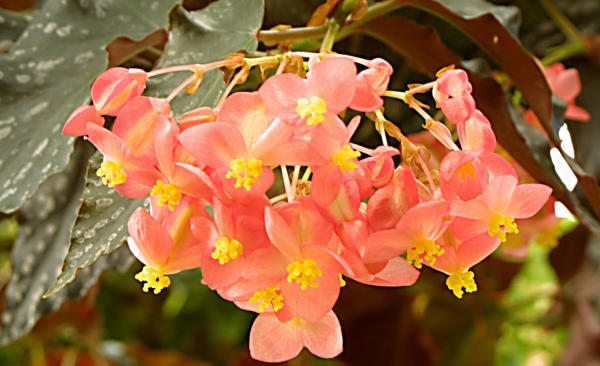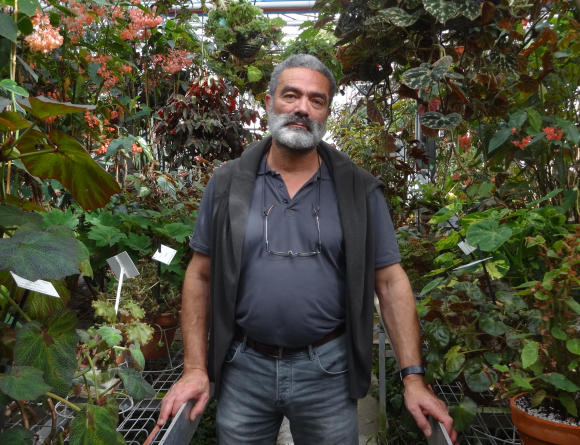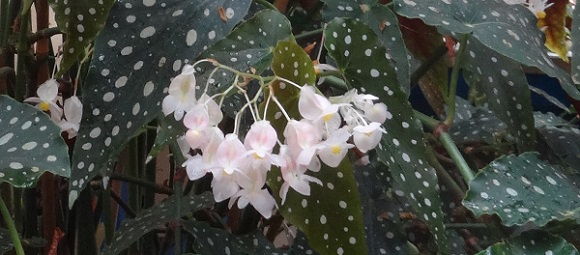
Begonias aren’t native to Rochefort, an upriver port town in western France, but they wouldn’t exist without Rochefort.
Well, the plant, a genus comprised of more than 1500 species, would exist; it would just be called something else. And if it weren’t known as the begonia then it might not be to Rochefort that you’d come looking for the Begonia Conservatory, Europe’s most important collection of the genus.
Admittedly, only a died-in-the-wool, rain-or-shine garden-lover or botanical brainiac would actually come to Rochefort solely for the begonias. But there you have it, begonias in Rochefort—and with good reason, too.
Allow me to explain.
Rochefort’s begonia connection
In 1666 the dynamic duo of France’s golden century, Louis XIV and his right-hand minister Colbert, seeing the need for France to become a maritime power as the European powers developed trade with and possessions in the New World, launched the creation of a naval dockyard at Rochefort. (See this article for more about sights and people related to Rochefort’s maritime history.)
One of the administrators overseeing the development of the town and dockyard was Michel Bégon, Rochefort’s intendant from 1688 to 1710. Numerous expeditions to the New World, in particular the Caribbean, would set out from Rochefort during those years. Having spent several years on the islands himself earlier in his career, Bégon had a keen interest in scientific discoveries made during expeditions there.
Among the scientists on several expeditions setting out from Rochefort and sponsored by Bégon was the botanist-monk Charles Plumier. Plumier not only recorded details about a number of plants previously unknown to Europeans, he was also the first person to make botanical dedications, by which a plant would be named in someone’s honor. Among the best known of the plants that Plumier named are the fuchsia, named for the German botanist Leonhard von Fuchs, the magnolia, named for French botanist Pierre Magnol, and, you guessed it, the begonia named for Michel Bégon.
Bégon probably never actually saw a real begonia himself, unless he accidentally stepped on one during his years in the Caribbean. Plumier brought back drawings rather than actual plants due to the difficulty of transporting them alive. In fact, the first begonias didn’t arrive in Europe until nearly a full century later, when in 1777 some were brought to the Royal Botanical Garden at Kew, starting a British love affair with the begonia long before the French. Plumier’s own name is largely forgotten, though he was eventually honored with the genus plumeria, the Central and South American native more commonly called the frangipani.

The Begonia Conservatory
Rochefort’s world-class collection began with the gift of an amateur begonia collector, Vincent Millerioux, to the town in 1986. At the time, the town was creating a horticultural zone on its edge covering 100 acres, which would be leased in parcels to horticultural businesses. Greenhouses of the Begonia Conservatory came to anchor the site.
When the town sought someone to organize and then oversee the conservatory, Patrick Rose, who had previously worked with Millerioux for his private collection, was the natural choice. Rose remains at the head of the conservatory and is a recognized world specialist on the genus. From Millerioux’s original collection of 250 species of begonia, the conservatory greenhouses now holds nearly 600 species from nature and 1000 more hybrids created from 1845 to the present. Labelled “national collection,” this is considered the most important begonia collection in Europe.
The conservatory has many plants that have grown to a size that visitor don’t often see in botanical gardens. There are sure to be some plants in flower whatever time of year one visits, but Rose says that the interest of the collection is the diversity and particularly the diversity of the leaves, rather than whether or not they are in flower. Despite the floral consonance of his own name, Rose says that he’s more interested in the diversity of leaves within the genus rather than its flowers. He says that he is especially fond of the freshness of the vegetation in spring as the days get longer.

Visiting the conservatory
The Conservatoire du Bégonia can be visited February through November on regularly scheduled guided tours. The conservatory gardeners themselves serve as guides. Tours are accessible to the casual visitor while also being informative for the begonia-lover. The passionate visitor, says Rose, is more likely to come from northern Europe rather than France or southern Europe, with curious British visitors leading the way.
The visit is conducted in French, while non-French-speakers join along with an explanatory brochure in English. Nevertheless, groups are often small enough that the gardener-guide, if he speaks adequate English, if often willing answer the questions of non-French-speaking visitors. Pre-constituted groups should call and ask to have one of the more fluent English-speaking gardeners as their guide.
Le Conservatoire du Bégonia
La Prée Horticole
1 rue Charles Plumier
17300 Rochefort
Tel. 05 46 82 40 30
www.begonia.rochefort.fr
The conservatory is open February through November. See the website for regularly scheduled tours, entrance fees and opening times.
For another exceptional place and individual in Rochefort read Sylvie Deschamps, France’s Master Artist of Gold Embroidery. Also read Rochefort: Ships, Shipyards and Seafarers.
© 2017, Gary Lee Kraut
An earlier version of this article was published in The Connexion.


What a great account of individual effort over centuries. Fans of The Philadelphia Flower show and other great American flower expositions will learn so much here. I am going to post it on Facebook for those who love flowers; perhaps next spring they will regard their Begonias in a new–French–light!